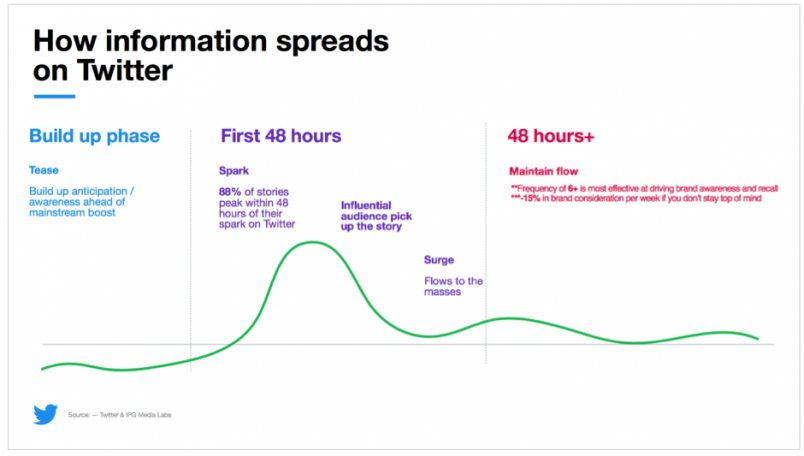Twitter: Look at this, not at me.
Ria Dunlop • 12th Nov 2018
Although we’ve seen significant success on Twitter for a particular client, the channel has a tendency of falling off the media schedule or coming in second place to its competitor. No prizes for names.
As well as limited measurement and being seen as an engagement based platform, Twitter has suffered from negative press for a lack of strategic direction, declines in growth and a loss-making business model, none of which appeal to brand advertisers.
As the event commenced, Twitter was positioned as social hub to ‘what’s happening in the world and what people are talking about’. In short, it sees itself as a ‘look at this’, platform rather than ‘look at me’. It’s not about selfies or self-promotion, but about sharing outside conversation with a wider audience.

According to Comscore, there are 31 million monthly active Twitter users in the UK and this audience tends to access the platform when they are most receptive, discovering the latest news and sharing opinion.
The notion that users log in to Twitter with a ‘discovery’ mindset was one I hadn’t really considered. Whether it be inspiration based or serendipitous discovery, the community atmosphere at the heart of the platform means users are more likely to #JoinIn and offer leverage for trending campaigns that bring people together.

In comparison with other social platforms, Twitter advert formats remain on the more native journey and allow brands to ask users for opinions, in the form of image and video polls.
However, contextual relevance is still the key to success, with 88% of stories peaking within the first 48 hours of their spark. This makes Twitter an ideal place to launch new products – which makes sense given 76% of users follow brands.

‘It’s all well and good as a launchpad, but what about ROI and measurement?’ Well, Twitter is winging its way to ensuring effective pixel tracking as it parks the more fluffy metrics and leans towards DR led reporting. Good news for many clients that wish to tap into the trending #BlackFriday hashtags which are just around the corner, measuring ROAS.
The whole event was enlightening in the sense that it felt as though Twitter were taking a step back to redefine their place in the eyes of agencies, however I couldn’t help but think its current point of difference could be duplicated across other platforms.
The New Yorker highlighted the scary truth that, ‘We live in the Age of the Upgrade and the generation raised on the Internet is the most fickle of brand champions: it loves something passionately, until it doesn’t. Then it moves on.’
Ultimately, is it really all about ‘look at me’ or ‘look at this’? Or is it more likely to be a case of ‘look out’ for the new feature or platform which interrupts the current social landscape and changes consumer loyalty all over again?


